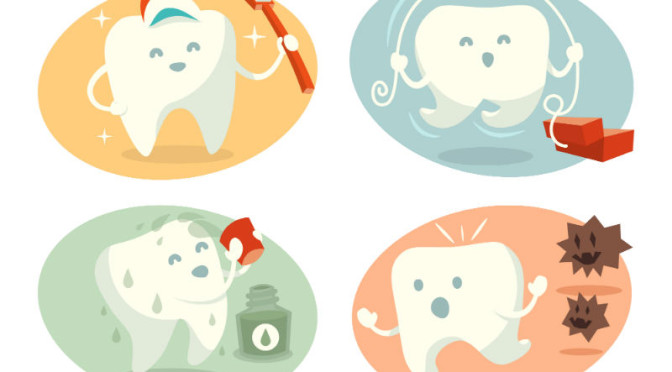Orthodontic Treatment Vs. Dental Treatment: Which Is Better For My Child?
By Anthony ● May 6, 2015
As a parent it can be tricky to navigate the medical map at the best of times. So what do you do when you have concerns about your child’s teeth, but don’t know the right course of treatment? Well, your family orthodontist and your dentist work together to protect and treat these issues — but it can be confusing to work out who to see. So who do you go to for help with teeth straightening?

To get a better understanding about who to consult and what treatment to choose, we need to clarify the roles that both dentists and orthodontists play in an overall treatment plan. A dentist is a health professional dedicated to the prevention, diagnosis and treatment of dental diseases, injuries and malformations. For general dental checks and minor procedures such as fillings, they are your first port of call.
On the other hand, an orthodontist is a fully qualified dentist who specialises in the irregularities of teeth — particularly when it involves overcrowding of the mouth. Orthodontists have undergone additional specialist training so that they can diagnose, treat and prevent problems associated with the alignment of teeth and the jaw. They are the experts to go to when more specific advice, or treatment, is required for teeth straightening.
The roles of dentists and orthodontists can sometimes overlap, but the decision over which professional to see will depend on the type of problem you are trying to address. While in some instances it may be more appropriate to see a dentist (for example, to treat a cavity), they will usually refer a patient on to specialist orthodontic care when teeth straightening surgery or implants are necessary. It’s a lot like the difference between going to a GP to treat a general health issue, or to a medical specialist such as a cardiologist or endocrinologist when more specific, in-depth care is required.
In Australia, orthodontists are required to complete:
- a Bachelor degree in Dentistry (a 5-year full-time University course);
- a Masters degree in Orthodontics (a 3-year full-time University course); and
- be registered as a Specialist in Orthodontics by the Australian Health Practitioner Regulation Agency (AHPRA).
When should my child go to an orthodontist?
You do not need a referral to see an orthodontist. Book a consultation with Inner West Orthodontics today and get your child's teeth assessed, and have your questions about teeth straightening answered.
It’s a good idea to make an appointment with an orthodontist if:
- your child suffers from tooth overcrowding or misalignment;
- you are concerned about the appearance of your child’s teeth;
- your child is experiencing jaw pain and headaches; or,
- your child is between 8-10 years old (regardless of whether or not they have any dental issues).
Why is teeth straightening so important?
Apart from creating a beautiful appearance and boosting self- confidence, tooth straightening is integral to maintaining general health and wellbeing. The benefits of undergoing tooth straightening treatment or surgery include:
- improved dental hygiene — crowded or overlapping teeth run greater risk of plaque, decay and infection, as they are more difficult to clean (especially for stubborn kids who don’t like to brush or floss!);
- protection against the gum damage that results from tooth overcrowding;
- minimised risk of developing speech problems in children, or removing the obstacles that have created existing ones;
- dental longevity ― crooked teeth may lead to excessive grinding and jaw-clenching, which may limit the longevity of teeth into adulthood, or cause unnecessary jaw pain; and
- alleviating bite problems such as overbite, underbite and crossbite.
It's important for orthodontic issues to be addressed early in life, when mouth and bone structure is still developing (that’s why we recommend coming in for a consultation between the ages of 8 to 10), and before more serious damage begins. Intervention at this stage will ensure your child doesn’t develop severe tooth or jaw problems into adulthood — at which stage orthodontic work could be far more complicated and costly. Choosing orthodontic treatment sooner rather than later will give your child the best possible opportunity to grow up a happy, healthy adult, and avoid long term dental issues.
But my child doesn't want to go!
We don't blame them — nobody likes to go to the dentist! But orthodontists are different; there's no frightening drills involved in a visit, and if surgical work if required, your kids will be in the right hands to keep them pain-free and at ease.
Most children and teenagers are also concerned about how orthodontic work will affect their appearance. Obviously, they'll be delighted with the positive change it will make in the long term, but initially a corrective treatment like braces can be daunting. The good news is that braces are no longer the social stigma they once were; technology has advanced! We now have options for clear or Invisalign ® braces (particularly popular amongst our adult clients — even celebrities use them), coloured braces, and orthodontic/teeth straightening techniques that are far less uncomfortable than they once were.
Are you ready to make a visit, or would you like further information on how orthodontic treatment will help your kids? Contact us and make an appointment with Dr Anthony Pistolese at Inner West Orthodontics today.







